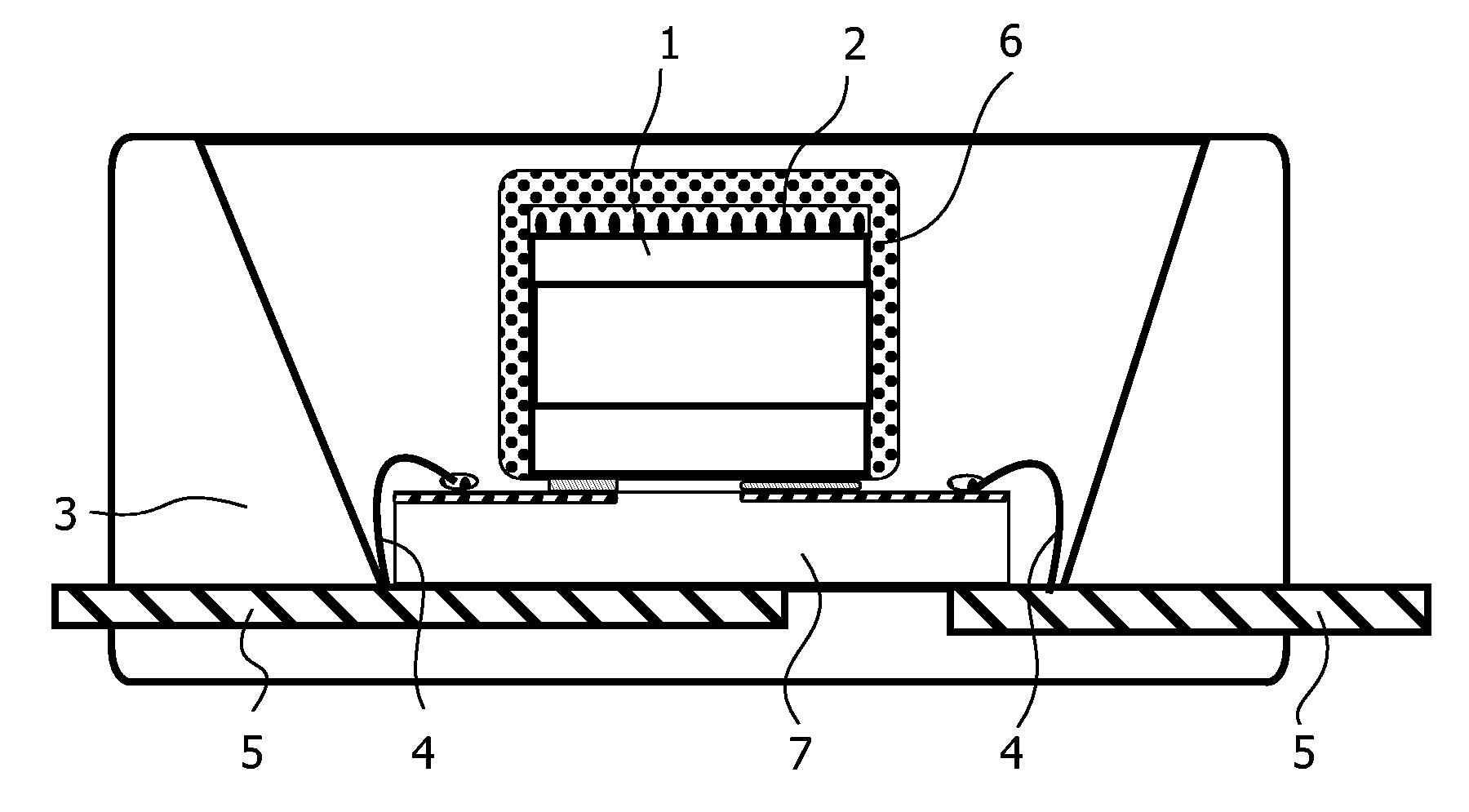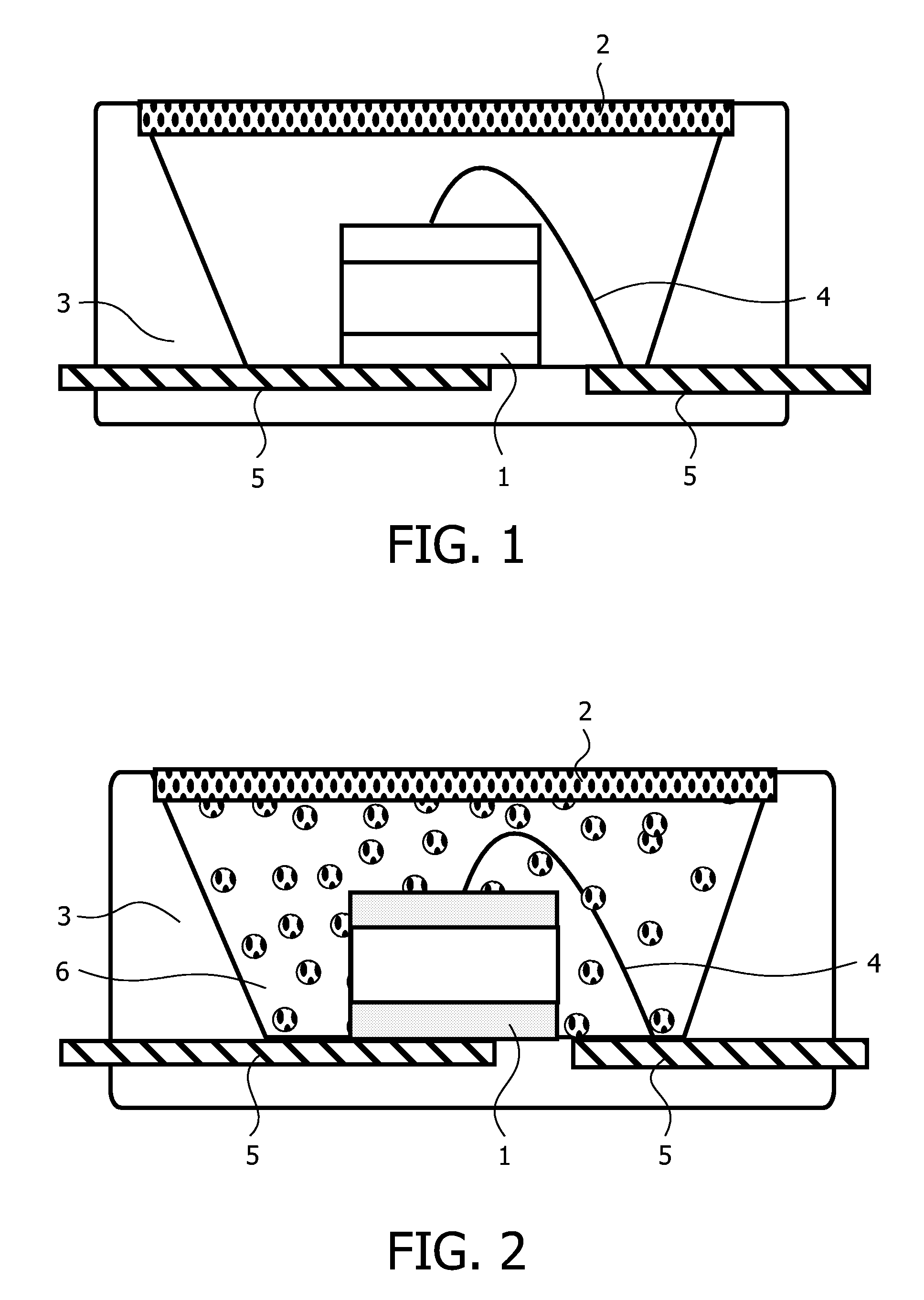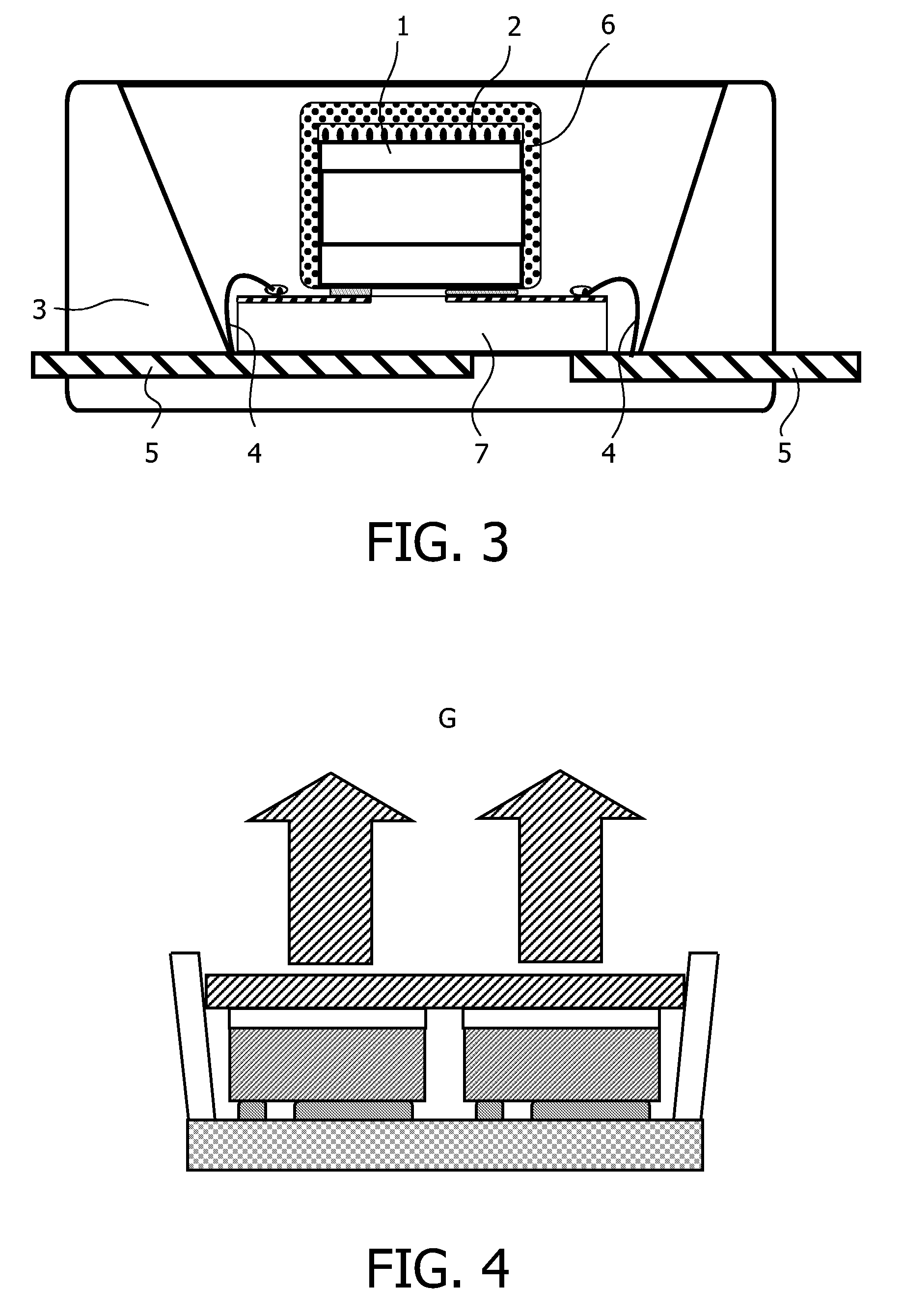Illumination System Comprising a Red-Emitting Ceramic Luminescence Converter
a technology of luminescence converter and red-emitting ceramic, which is applied in the direction of discharge tube luminescnet screen, discharge tube/lamp details, luminescent composition, etc., can solve the problems of poor control of particle size, troublesome adhesion strength of this phosphor to any substrate, etc., and achieve the effect of suitable light extraction efficiency and transparency
- Summary
- Abstract
- Description
- Claims
- Application Information
AI Technical Summary
Benefits of technology
Problems solved by technology
Method used
Image
Examples
first embodiment
[0104]In a white-light emitting illumination system according to the invention the device can advantageously be produced by choosing the luminescent material of the monolithic ceramic luminescence converter such that a blue radiation emitted by a blue light emitting diode is converted into complementary wavelength ranges in the amber ranges of the electromagnetic spectrum, to form dichromatic white light.
[0105]Particularly good results are achieved with a blue-emitting LED whose emission maximum lies at 390 to 480 nm. An optimum has been found to lie at 395 nm, another one is at 467 nm, taking particular account of the excitation spectrum (FIG. 6) of the europium(III)-activated yttrium rare earth sesquioxides according to the invention.
[0106]Amber light is produced by means of the phosphor material of the monolithic ceramic luminescence converter, that comprises an europium(III)-activated rare earth metal sesquioxide of general formula (Y1-xREx)2-zO3:(Eu1-aAa)z, wherein RE is select...
second embodiment
[0110]In a second embodiment yielding white light emission with even higher color rendering is provided by using a blue-emitting LED and an amber to red emitting monolithic ceramic luminescence converter comprising europium(III)-activated yttrium rare earth metal sesquioxide together with additional red, yellow or green broad band emitter phosphor pigments admixed in a resin bonded encapsulation layer and thus covering the whole spectral range of visible white light.
[0111]Useful second phosphors and their optical properties are summarized in the following table 2.
TABLE 2Compositionλmax [nm]Color point x, y(Ba1-xSrx)2SiO4: Eu5230.272, 0.640SrGa2S4: Eu5350.270, 0.686SrSi2N2O2: Eu5410.356, 0.606SrS: Eu6100.627, 0.372(Sr1-x-yCaxBay)2Si5N8: Eu6150.615, 0.384(Sr1-x-yCaxBay)2Si5-aAlaN8-aOa: Eu615-650*CaS: Eu6550.700, 0.303(Sr1-xCax)S: Eu610-655** color point depending on the value of x
[0112]The luminescent materials may comprise two phosphors, e.g. the amber to red emitting monolithic cera...
PUM
| Property | Measurement | Unit |
|---|---|---|
| wavelength | aaaaa | aaaaa |
| wavelength | aaaaa | aaaaa |
| excitation wavelength | aaaaa | aaaaa |
Abstract
Description
Claims
Application Information
 Login to View More
Login to View More - R&D
- Intellectual Property
- Life Sciences
- Materials
- Tech Scout
- Unparalleled Data Quality
- Higher Quality Content
- 60% Fewer Hallucinations
Browse by: Latest US Patents, China's latest patents, Technical Efficacy Thesaurus, Application Domain, Technology Topic, Popular Technical Reports.
© 2025 PatSnap. All rights reserved.Legal|Privacy policy|Modern Slavery Act Transparency Statement|Sitemap|About US| Contact US: help@patsnap.com



